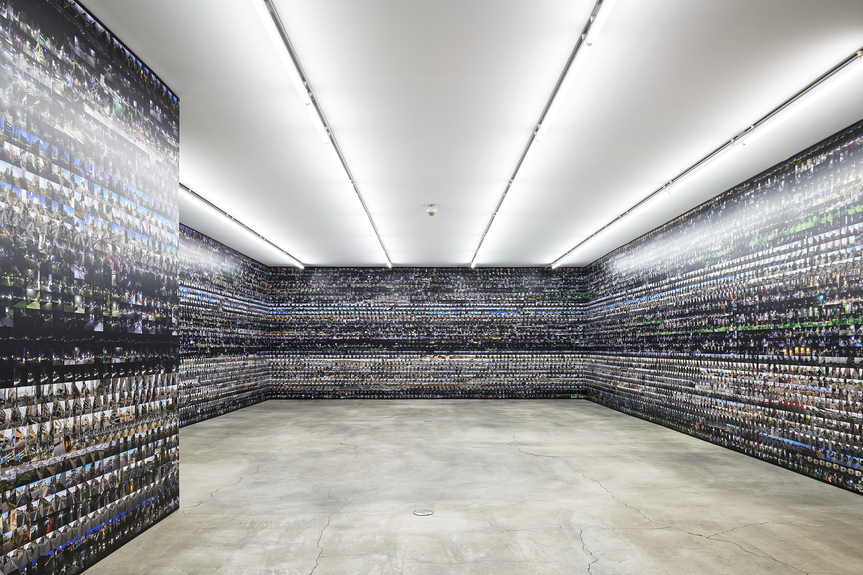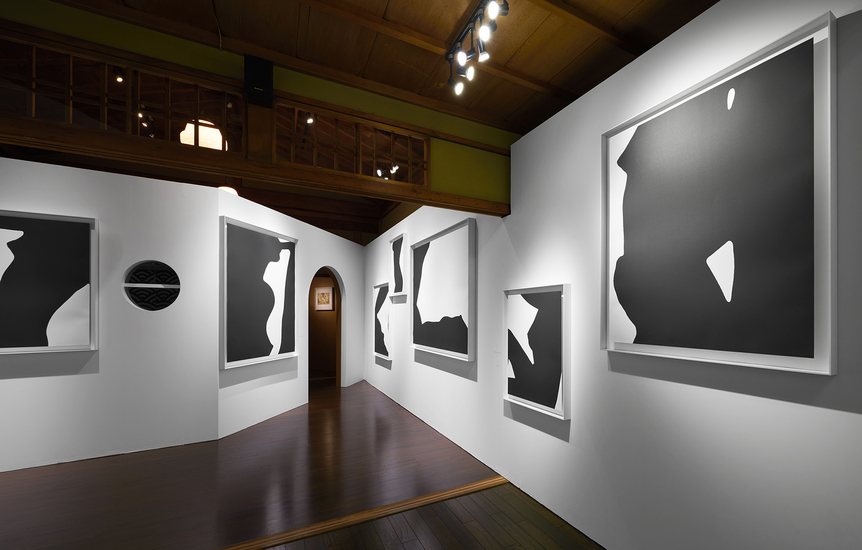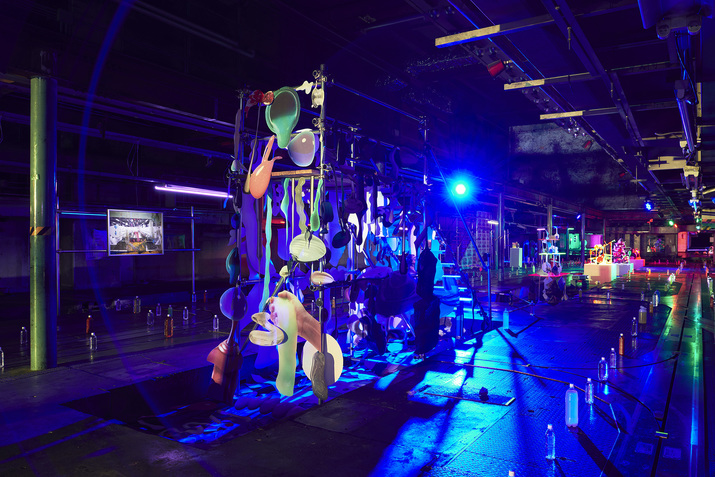-
From Current Issue
-
- Editor’s Letter Fire in the Heart
- Reviews I Gusti Ayu Kadek Murniasih
- Reviews 11th Seoul Mediacity Biennale: “One Escape at a Time”
- Dispatch Networked China
- One on One Monira Al Qadiri on Yukio Mishima
- Essays The rise of independent art spaces in pandemic-era Shanghai
- Features Tuan Andrew Nguyen
- Table of Contents
- Web Exclusives
- Archive
- Subscribe

R
E
V N
E
X
T
Installation view of ALFRED EHRHARDT’s “The Forms of Nature—100 Years Bauhaus” at Ryosokuin, Kyoto, for Kyotographie 2019. Copyright bpk / Alfred Ehrhardt Siftung. All images courtesy Kyotographie, unless stated otherwise.
The 2019 edition of Kyotographie had the theme “Vibe,” which Lucille Reyboz and Yusuke Nakanishi, directors of the annual photography festival, defined as the distinctive atmosphere of a person or place that is sensed intuitively. Works by 15 artists were displayed across 11 venues throughout Kyoto. The theme of this year’s event was loose compared to in previous iterations, but the exhibition locales, all deeply embedded in the urban fabric of Kyoto, helped to provide unity.
Four of the festival’s showcases were located in the Gion district—the traditional heart of geisha entertainment culture. Sfera displayed works by Kenryou Gu, who created a floor-to-ceiling collage across three of the gallery’s walls, using 15,972 snapshots of street scenes in Kyoto. The images were taken with a camera strapped to Gu’s back. By giving up control of the composition, the artist turned photography into a performance, archiving the city as he sensed it somatically, and at random. Steps away, in the creative space y gion, an exhibition of three Cuban artists—Alberto Korda (1928–2001), René Peña, and Alejandro González—told of Cuba’s modern history, from the revolution in the 1950s to the present. While Korda’s portraits of fashion models and female rebels evoke the forward-looking optimism of the revolution, Peña’s self-portraits and González’s depictions of people on the margins of society evince the nation’s realities today—contrasting sharply with the utopian, socialist promises of the revolution. On the opposite side of Gion, a retrospective spotlighting Bauhaus photographer Alfred Ehrhardt (1901–84) was held in Ryosokuin, a sub-temple of Kenninji, the oldest Zen temple in Kyoto. Ehrhardt’s black-and-white photographs capturing the patterns of tidal flats and sea shells seemed to float above the black tatami mats. Though important mostly for their historical value, the photographs complimented others in the festival that document the power and beauty of nature, such as Vik Muniz’s shots of knotted vines and chardonnay leaves, composed of charcoal powder, leaves and wood, at Asphodel gallery.
The remaining seven venues were all in the historic commercial center of Kyoto, known for its merchant houses. Kondaya Genbei, for example, hosted two exhibitions. In the main part of the building, French artist Pierre Sernet displayed abstract, black-and-white images based on the silhouettes of couples engaged in sexual activity, alongside erotic shunga (“spring pictures”) from the Edo period. The striking contrast between the austere silhouettes and the lavishly illustrated prints made for a visually rich presentation. In the darkened, detached storage house, dancer-choreographer-filmmaker Benjamin Millepied showed videos and out-of-focus still photographs of dancers, paying homage to the beauty of the human body. At Shimadai Gallery Kyoto, another traditional merchant house, Polish artist Weronika Gęsicka’s “What a Wonderful World” comprised 1950s photographs of idyllic family life, manipulated by the artist to underscore how the glossy materials were over-dramatized and bordered on absurdity. Gęsicka intervened in a shot of a couple biking along a pier, for instance, such that the woman’s tire has warped into an impossible shape, while she appears to be blissfully ignorant. Nearby, in the stately Museum of Kyoto Annex, Albert Watson presented his renowned portraits of celebrities—including photos of musician Ryuichi Sakamoto, which made their public debut—and landscapes from Scotland, taken over his nearly four-decade-long career.
Further north of the city, Teppei Kaneuji turned the former printing plant in the basement of the Kyoto Shimbun newspaper building into a fantastic space full of photographs, videos, and moving objects, amid flashing lights and mechanical noises. The installation uses printing ink as a metaphor for the endless flow of images that create our worldview. Moving west toward the Nijo-jo Castle, three exhibitions of documentary photography were held in the Horikawa Oike Gallery. Included were Italian artist Paolo Pellegrin’s frames of cracking ice in Antarctica, which expose the realities of climate change, and Kosuke Okahara’s series featuring women who have suffered physical and emotional abuse.
Finally, at Nijo-jo Castle, one of Kyoto’s most famous landmarks, Tunisian artist Ismaïl Bahri opened several small holes in the sliding doors so that viewers could look out at the scenery, including a historic camphor tree, while allowing light to filter into the dim space. Other photographs of abstract human forms and a text-based video were used to provide varied sources of light. Bahri’s installation created a sense of excitement and wonder, encapsulating the ethos of Kyotographie.
The 2019 Kyotographie is on view at various locations in Kyoto until May 12, 2019.
To read more of ArtAsiaPacific’s articles, visit our Digital Library.




















